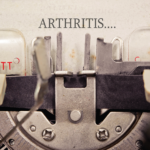Perhaps the earliest description of immune privilege, a term coined by the Nobel laureate, Sir Peter Medawar in the 1950s, was actually made 75 years earlier by a Dutch ophthalmologist, J.C. van Dooremaal, who noted prolonged survival of mouse skin grafts placed in the anterior chamber of the dog eye.3 This observation was carried further by Medawar and his colleagues, who showed that the aqueous humor, which fills the anterior chamber, contained a wide array of anti-inflammatory and immunosuppressive molecules that act on both the innate and adaptive responses.3
It took a stroke of serendipity to lead to these groundbreaking discoveries. Early in World War II, a plane crashed a few hundred yards from Medawar’s home in Oxford, England, and the pilot, who sustained third-degree burns over most of his body, was taken to the Radcliffe Infirmary, where he was visiting that afternoon. The obvious solution was to graft skin, and Medawar tried several times to cover the wounded area with a preparation of the patient’s own skin, but without success. He tried freezing the patient’s available tissue and slicing it into thin segments and also attempted to strip the epidermal cells using trypsin, all without benefit. As a result of this disappointing experience, he decided to study the nature of the homograft reaction itself. He observed that in burn patients, homografts were invaded by lymphocytes, but autografts were not.
Using the anterior chamber of the eye as a site of immune privilege for his tissue grafting experiments, Medawar was among the first immunologists to dissect the pathways critical for successful organ transplantation. His prescient observations that immunological tolerance to transplants could be acquired in adult life provided the therapeutic underpinnings for countering allograft rejection. As a frequent visitor to my hospital, presumably he shared these insights with the late surgeon Dr. Joseph Murray, who performed the world’s first successful renal transplant.4
But nature is never perfect. Occasionally the eye’s privileged immune status is pierced, and we bear witness to the clinical correlates of these errors, including those cases of iritis and uveitis that have a predilection for developing in patients who carry the HLA-B27 allele or in young girls who are ANA antibody positive or when normally bland rheumatoid nodules sprout out of an eyeball, eviscerating the surrounding sclera. Thankfully, nowadays, we are spared this ghoulish appearance.
Smell with Inspiration
Smell is the most underappreciated sense, perhaps because it reminds us of our animalistic links to our prehistoric past. Sigmund Freud argued that humans lost their sense of smell when they first stood upright.5 Au contraire, Herr Freud! The olfactory receptor gene family remains the largest in the mammalian genome, comprising 1% of all genes. Our sense of smell dates back 200 million years to the age of reptiles, when a keen sense of smell was a requisite for survival. From an evolutionary perspective, the olfactory bulb is the only part of the central nervous system that defies the brain-development principle of “late equals large.”6 The entire olfactory limbic system, including the bulb, the hippocampus and amygdala, remains disproportionately large in homo sapiens, providing us with a tactical edge when we are predators while reducing our risk when we are seen as prey.
